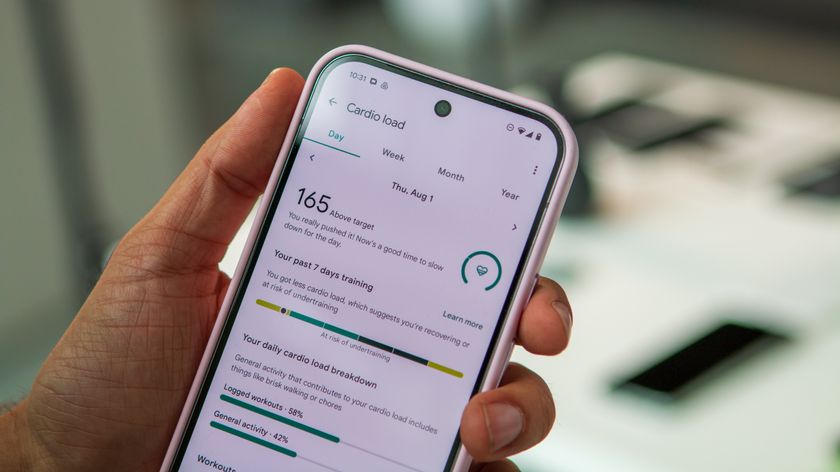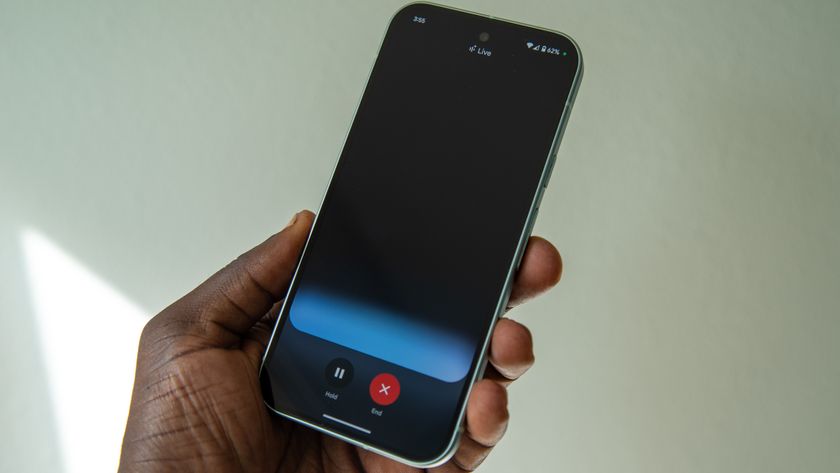Fitbit Charge 5 vs. Charge 4: Should you upgrade?
Breaking down how our favorite fitness tracker improves on its excellent predecessor.
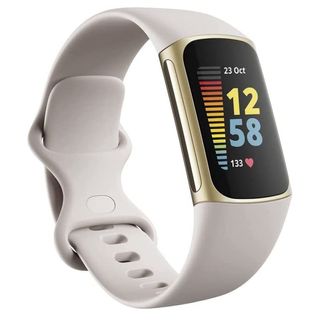
Vital upgrades
The Fitbit Charge 5 takes the Charge 4 template and bundles in a full-color AMOLED display, stainless steel casing with a thinner design, two new health sensors, and new software tools like Daily Readiness; an excellent jump in quality considering the mere one-year gap.
For
- GPS, HRM, NFC
- Activity/sleep tracking
- SpO2, ECG, EDA sensors
- AMOLED display
- Attractive design
Against
- More expensive
- Some features only available with Fitbit Premium
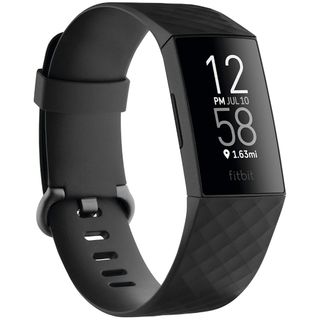
Still one of the greats
There's nothing wrong with keeping things simple. The Fitbit Charge 4 is a good example of that. It has all the features most users need to enjoy their fitness tracking experience. If you don't mind the older design and lack of advanced health sensors, you'll love the Charge 4.
For
- GPS, HRM, NFC
- Activity/sleep tracking
- SpO2 monitoring
- Lightweight design
- Affordable price tag
Against
- Not as stylish as Charge 5
- Doesn't have ECG or EDA sensors
Before the Charge 5 arrived on the scene, the Fitbit Charge 4 sold in huge numbers and set a benchmark for what fitness trackers should accomplish, from long battery life to built-in GPS, and dedicated health sensors and tracking. But its successor, the Charge 5, took that template and added some critical updates that made it a more attractive option.
Should you cast aside your Charge 4 for the Charge 5? Or should you buy the older fitness tracker if it means saving money? We're pitting the Fitbit Charge 5 vs. the Fitbit Charge 4 — ranked #1 and #2 in our current list of best fitness trackers — to help you decide. But to summarize, if you want a more advanced user experience with new design elements and a color AMOLED display, you may want to think about upgrading to the Fitbit Charge 5.
How the Fitbit Charge 5 changed the game
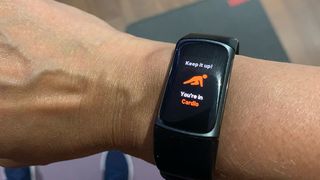
At first glance, you might notice the Charge 5 looks more like the Fitbit Luxe than the previous Charge models. It's the first in the series to offer a bright AMOLED display, rather than a monochrome OLED. It also comes in a stainless steel case rather than a plastic one, which gives it a more premium look. Users will appreciate that the case is significantly thinner than previous models, too.
Unfortunately, for former Charge 4 owners, the Charge 5 bands are proprietary so you can't use your old bands if you upgrade. We've selected the best Fitbit Charge 5 bands to help find you a replacement.
The Fitbit Charge 5 offers some other firsts, including the advanced EDA (electrodermal activity) and ECG (electrocardiogram) sensors. If you're familiar with the Fitbit Sense, you know it was the first smartwatch from the company to offer these perks.
| Header Cell - Column 0 | Fitbit Charge 5 | Fitbit Charge 4 |
|---|---|---|
| Display | AMOLED | Backlit OLED |
| Sensors | 3-axis accelerometer, optical heart rate sensor, SpO2, ECG, EDA, ambient light sensor | 3-axis accelerometer, altimeter, optical heart rate sensor, SpO2 |
| Battery life | 7 days | 7 days |
| Water-resistance | 5ATM | 5ATM |
| Onboard GPS | ✔️ | ✔️ |
| Active Zone Minutes | ✔️ | ✔️ |
| ECG & EDA | ✔️ | ❌ |
| Always-on display | ✔️ | ❌ |
| Fitbit Pay | ✔️ | ✔️ |
| Fitbit Premium | Free six-month trial | Free three-month trial |
Those who are used to having basic sensors on their fitness tracker might benefit from a little background. These new sensors will allow users to measure their temperature and stress levels (EDA) more accurately. The ECG feature allows users to check for irregular heartbeats.
While the EDA functionality will be available at launch, the ECG app took a while to arrive. But the Charge 5 has received plenty of post-launch love; most recently, Fitbit added a new Find Phone feature and fresh clock faces in 2022. The Charge 4 hasn't received as much attention recently, but it did get a HRM update to detect AFib, or irregular heartbeats. This was also added to the Charge 5.
Another new feature on the Fitbit Charge 5 is the Daily Readiness experience, designed to provide a better understanding of when your body is ready to work out, and when it's time for additional rest and recovery.
Users will be able to access this information in the Fitbit app each morning. You'll receive a personalized score based on several key metrics, including activity, heart rate variability (HRV), and sleep history.
Customers who purchase a new Fitbit Charge 5 will receive six months of Fitbit Premium for free.
Keep in mind that you must have a Fitbit Premium subscription to access the Daily Readiness feature. The good news is that customers who purchase a new Fitbit Charge 5 will receive six months of Fitbit Premium for free. This allows users to try out all new workouts, mindfulness sessions, recovery tips, and in-depth analytics.
One familiar feature on the Fitbit Charge 5 that you may recognize is the Stress Management Score. When you open the Fitbit app each morning, you'll be able to see if you're mentally prepared to take on more challenges, or if it's time to rest and recharge.
Fitbit Premium makes stress management even better. Users will have access to over 300 meditation and mindfulness sessions from popular brands and reputable experts. Some examples include Ten Percent Happier and Mindful Method by Deepak Chopra.
The Fitbit Charge 5 is still packed with other standard features to enjoy. You'll have built-in GPS, activity/sleep tracking, heart-rate monitoring, SpO2 tracking, Cardio Fitness Level, female-health tracking, and much more. You also get Fitbit Pay as a standard feature, which is always nice to have.
The Charge 5 is significantly more expensive than the Charge 4 and other trackers on the market. If you think the price tag is worth the new design and improved features, you'll be more than happy with this device.
The Fitbit Charge 4 is still an impressive tracker
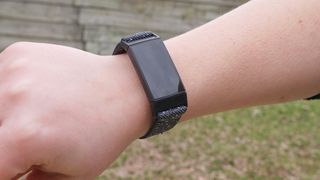
Over the years, the Fitbit Charge design has remained fairly consistent. You'll find many of the company's usual design elements present on the Fitbit Charge 4. It maintains the same rectangular shape as the Fitbit Charge 3.
However, this model consists of a lightweight plastic body, which is great for fitness enthusiasts. It has the same monochrome OLED touchscreen display as previous models. The Fitbit Charge 4 bands are interchangeable, so it's easy to swap them out when you feel like mixing it up.
One of the biggest differences between the Fitbit Charge 4 and Charge 3 is that the Charge 4 has built-in GPS. This is an especially impressive feat for a fitness tracker. Whether going on a hike or heading outside for a run, you can leave your phone behind and still use GPS to track your route during the activity.
The Fitbit Charge 4 was the first to offer NFC payments as a standard feature.
Another important accomplishment is that the Fitbit Charge 4 was the first to offer NFC payments as a standard feature. If you owned any previous models, you know that Fitbit Pay was only available on Special Edition models. Fortunately, users no longer have to pay extra for a model with contactless payments.
As you may know, sleep tracking has been a useful feature across the Fitbit Charge series for a while now. With the Charge 4, the company added a "smart wake" feature that uses machine learning to determine the optimal time to wake up the user every morning. Let's not forget about the Sleep Score feature, which delivers deeper insights into the quality of the user's sleep.

You also get the Active Zone Minutes feature that uses the heart rate sensor to determine when you've hit your personalized heart rate zone. During an optimal workout, you'll earn credit based on your fat burn, cardio, and heart rate zones. This feature will offer more details and give you a personalized number to work toward. The personalized heart rate zone is based on the user's age and fitness level.
Users will be glad to know that the Fitbit Charge 4 is equipped with all of the company's usual features. Some examples include automatic exercise recognition with SmartTrack, Cardio Fitness Level, reminders to move, female health-tracking, stress monitoring, and more.
Fitbit Charge 5 vs. Charge 4: Should you upgrade?
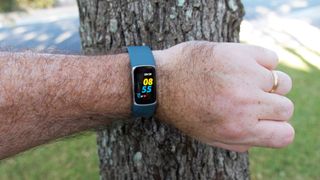
The best way to determine whether or not to upgrade to the Fitbit Charge 5 from the Charge 4 is to consider your health/fitness goals. Some people only need the basics when shopping for a fitness tracker. As you might've gathered, the Fitbit Charge 4 is a highly capable device with plenty of features to offer.
While you won't have the new design or AMOLED display, the Charge 4 still comes with built-in GPS, activity/sleep tracking, heart-rate monitoring, SpO2 tracking, Active Zone minutes, and more. If you're on a budget and content with the Charge 4's features, it's still a great tracker that will deliver a great experience.
If you've owned the Charge 4 for a while and you're ready for a change, the Charge 5 might be calling your name. It's got tons of smartwatch-like features that take the user experience to the next level. Health enthusiasts who want access to every key detail will appreciate the new features, including the ECG and EDA sensors. The new design is also a major selling point and might be enough to convince some users to upgrade.

Health enthusiasts unite
Those who want an advanced tracker with all the health sensors under the sun will likely want to upgrade to the Fitbit Charge 5. It has an attractive new design and some new health features that you'll love. If you don't mind the hefty price tag, it's a worthy upgrade.

Stick to the basics
The Fitbit Charge 4 is still a pretty advanced tracker, but it's not quite on the same level as the Charge 5. If you're not in love with the new design and you don't need every health sensor possible, you might prefer to stick to the basics with the Charge 4.
Be an expert in 5 minutes
Get the latest news from Android Central, your trusted companion in the world of Android
Courtney Lynch is a freelance writer at Android Central. She's obsessed with all things health, fitness, and music. At any given time, she can be found checking out the latest and greatest gadgets while simultaneously petting her dog and sipping iced coffee.
- Michael L HicksSenior Editor, Wearables & AR/VR

